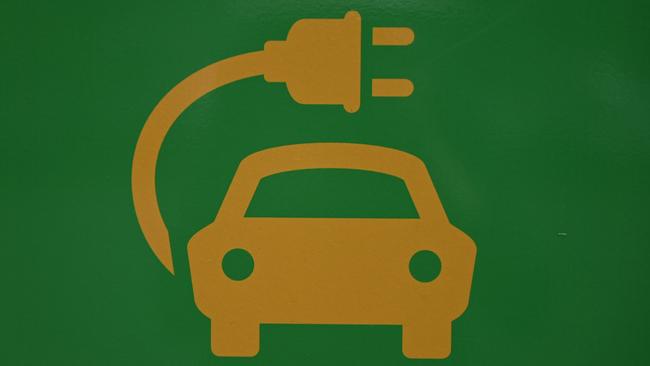Call to put brakes on vehicle emission cuts
The proposed fuel-efficiency standard could force half of all new car sales to be electric by the end of the decade, the same as Bill Shorten’s contentious target ahead of the 2019 election.

A national motoring group has claimed Anthony Albanese’s proposed fuel-efficiency standard could force half of all new car sales to be electric by the end of the decade – the same as Bill Shorten’s contentious target ahead of the 2019 election – amid industry warnings the government is moving too fast to reduce vehicle emissions.
The Coalition is laying the groundwork for a political fight, with transport spokeswoman Bridget McKenzie comparing the only available electric ute in Australia worth $93,000 to a $52,000 Toyota HiLux while declaring Labor’s changes would drive up the cost of vehicles.
With the government facing calls to release modelling showing Australians could save $1000 a year in fuel in 2028 under the changes, industry groups said the total cost of car ownership had to be factored into savings passed on to consumers.
Climate Change and Energy Minister Chris Bowen rejected the attack, saying neither tradies nor any other Australian would have to pay more for a vehicle.
He accused the opposition of re-running Scott Morrison’s “end the weekend rubbish”, which was sparked in 2019 by Mr Shorten’s pre-election promise that 50 per cent of new car sales would be electric by 2030. The party later walked away from the policy.
Industry sources expected Ford, Nissan, Mitsubishi and Isuzu could face some of the biggest challenges under Labor’s preferred standard to reduce the carbon intensity of newly sold cars by 60 per cent by the end of the decade. The CO2 output for passenger vehicles and SUVS would progressively reduce from 141g per kilometre in 2025 to 58g/km in 2029, while light commercial vehicles including utes and vans would lower their emissions from 199g/km to 81g/km in that time.
Carmakers will be fined about $100 for every gram of carbon their fleet exceeds the threshold.
Motor Trades Association of Australia chief executive Matt Hobbs – whose members sell, service, repair and fuel the country’s motor vehicle fleet – said he was concerned about the standard’s impact on utes and 4WDs.
“That’s the lifeblood of dealers. If that dries up, you’re going to have a whole lot of dealers go broke,” he told The Australian.
“At least 50 per cent of all new cars by 2029 will have to be EVs to hit that target and not pay a price. There are no internal combustion engines that can hit that number, even really small cars, so basically you can’t sell them. Hybrids, if it’s a really small car, maybe (could reach the standard).
“This isn’t a ban, but as the targets gets tougher car companies have to work out how to offset it or otherwise look at which vehicles don’t make the standard.”
While the automotive industry is supportive of setting a fuel efficiency standard, peak bodies on Monday said the government’s targets could affect the affordability of new cars and the choice available to consumers.
Federal Chamber of Automotive Industries chief executive Tony Weber said the government needed to explain the total cost of car ownership under its changes, rather than just the petrol savings.
“That includes maintenance, insurance, obviously the fuel price but really importantly the purchase price and level of depreciation. That, in a cost-of-living crisis, is absolutely critical to families and businesses in Australia,” Mr Weber said.
The government released a suburb-by-suburb breakdown of what average new car buyers could save on petrol and maintenance over five years under its preferred fuel efficiency standard, with a person in Gosford NSW saving $8000 or someone in Frankston Victoria saving $7000.
Mr Bowen said on Monday that the new vehicle efficiency standard would not require companies to sell a minimum percentage of EVs but rather encourage them to improve fuel efficiency of every vehicle they sold, whether they be electric, petrol, diesel or hybrid.
“The standard is specifically designed to apply across a total fleet, not individual vehicles or models,” he said.
“It is also technology agnostic in order to give manufacturers the option of how they choose to reduce emissions across their entire fleet, be that through delivering more fuel efficient petrol models that are available overseas to Australian buyers, or by bringing in battery vehicles.”




To join the conversation, please log in. Don't have an account? Register
Join the conversation, you are commenting as Logout